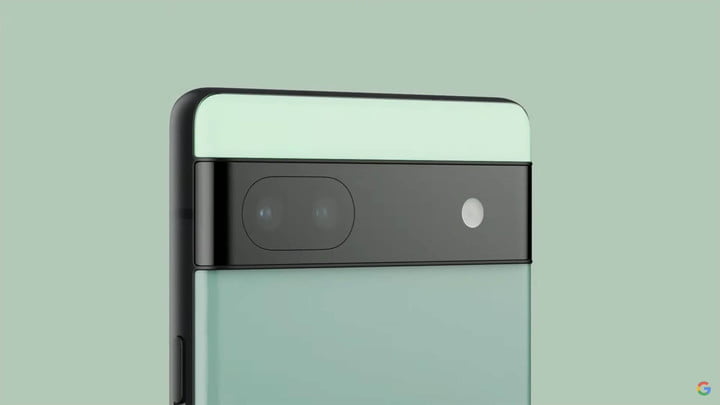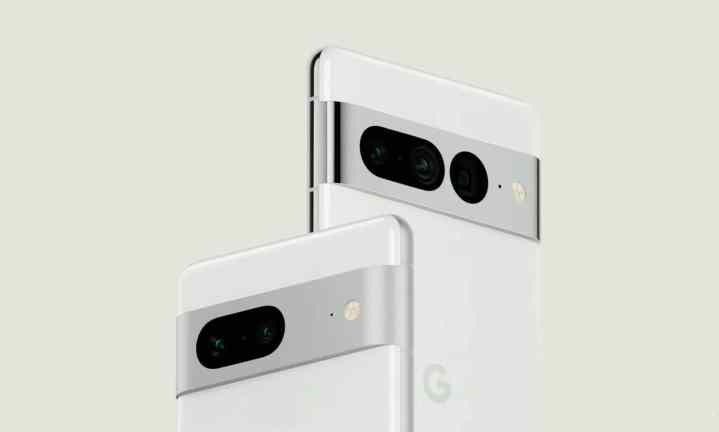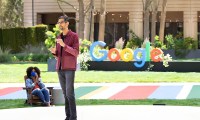Google held its keynote address at its annual developer’s conference, Google I/O. As expected, we got a ton of announcements regarding Google’s plans for both hardware and software. We got updates about Android 13, Chrome OS, the Pixel 6a, the Pixel Watch, Nest Hub, and more. Here’s the rundown of everything from today’s keynote.
How to watch Google I/O 2022
Did you miss the keynote? You can still watch the whole thing on YouTube (below) or at Google’s I/O website: io.google/2022. While you’re there, you can take part in a few other breakout sessions that we recommend.
These sessions and the keynote itself will be available to stream for up to two weeks after the event at the Google I/O website above. Here’s what was covered during the keynote.
Android 13

Android 13 was very much on the table today as Google outlined a number of improvements coming to the next version of its operating system. Google’s focus for this iteration of the operating system falls on all the forms of computing people love and making all your devices work better together to solve problems and help you throughout your day.
After recapping what’s come so far (RCS, Material You, etc.), Google announced Google Wallet, which will include payments, passes, and Digital IDs coming later this year. You’ll be able to import your driver’s license in the U.S. and share it via NFC or QR code.
Pixel Watch

As expected, Google introduced its new Pixel Watch during the keynote, but only as a preview. Finally, Google will have a smartwatch all its own, and if you ask us, it’s about time. The Watch has been subject to leaks and rumors in the past few months, including a full-on “Whoops, I left it at a restaurant” (and never bothered to go back and get it) moment.
Now we know more about Google’s smartwatch. Not surprisingly, it runs on WearOS and a “new Wear experience,” and it includes features like a heart rate monitor, step counting, and the ability to pair with your favorite Fitbit services. It will come this fall, alongside the Pixel 7 and Pixel 7 Pro.
Pixel 6a

Google also unveiled the next budget phone in the Pixel A-series, the Pixel 6a. The A-series of Pixels is always highly anticipated because they bring all the best Pixel camera features to a budget smartphone. As expected, the Pixel 6a runs on Google’s own Tensor processor, with 6 GB of RAM and 128 GB of onboard storage. It has a 6.1-inch display and a 4,306 mAh battery.
It’s available in charcoal, chalk, and sage colors, and will sell for $449 when it becomes available on July 21 online and in-store on July 28.
Pixel Buds Pro

We also got a new set of Pixel Buds Pro featuring premium sound with active noise cancellation, volume EQ, transparency mode, and more. ANC is a first for the Pixel Buds, so we’re excited to see that. The Pixel Buds Pro have a similar design as in years past and, of course, they still have hands-free “Hey Google” activation. Battery life looks to be decent at 7 hours on a single charge with ANC on. You’ll get 20 hours including the case. The Pixel Buds Pro will come in four colors: Charcoal, fog, coral, and lemongrass. Pre-orders start July 21 and you can buy it in-store on July 28. They’ll be priced at $199.
Pixel 7 teased

The Pixel 7 is coming this fall and features an aluminum finish on the camera bar. Like the current generation, the Pixel 7 and 7Pro will have a dual/triple camera setup respectively. The cameras have a slick oval look to them, as opposed to the solid black bar from the Pixel 6. They’ll feature the next generation of Tensor processors. Of course, both phones will ship with Android 13.
Tablet optimization
Google is doubling down on tablet optimization. While discussing foldables and tablets from makers like Xiaomi, Samsung, and more, Google mentioned some optimizations coming to tablets. Google is queuing up changes to tablets including a multi-column notification interface and the ability to drag and drop photos between Google Photos and Gmail. Overall, Google promises to update more than 20 of its own apps for tablets. That leads us to our next topic.
Pixel tablet teased
Following the tablet optimizations, it makes sense that Google also teased a Pixel Tablet, coming in 2023. The tablet will have a Google Tensor chip and be designed to work with other Pixel devices. Also, based on the render Google shared, it will have fairly large bezels. Nice to see some things never change.
Other Google ecosystem improvements
Of course, Google has a whole ecosystem of products and services not neatly categorized into hardware or Android. Google also updated a lot of its offerings in those spaces as well, as detailed below.
Google Search

Of course, Search is at the heart of all things Google. the company spent time recapping searches via text, voice, and image search (read: Google Lens). Earlier, Google introduced Multisearch, which allows you to, for example, take a photo of an object and base a search query around that photo. Later this year, Google is rolling out new versions of Multisearch, including an additional “near me” variable so you can search for a plate of food, find out what it’s called, and find out where to eat it near you.
There’s also Scene exploration, which allows you to scan a scene and get information based on overlays that Google adds. Google cited a shelf of chocolates that you can scan and get information on which chocolate bars are nut-free. It allows you to get a sort of augmented reality-like overlay of an entire scene in front of you.
Skin Tone
Google adopted the Monk Skin Tone Scale to help shape Google’s imagery. The scale, developed by Harvard professor Ellis Monk, is a 10-point system designed to accurately portray skin tones of all kinds.
Realtone filters will be designed to work across skin tones and have been developed using the Monk Scale. The filters can be applied with just a few taps in the Photos app. Google also open-sourced its work with the Monk Skin Tone scale so developers can use it in research and product development. According to Google, “being represented is a right if the internet is for everyone.”
Privacy and ads
Privacy was a huge focus during today’s keynote, with Google rolling out several initiatives aimed at improving ad placements and payment security, including the addition of virtual cards for Chrome and Android payments. These virtual cards will essentially replace your actual credit card number, so if any information gets compromised, it won’t affect your actual credit card. You will also be able to ask Google to remove personally identifiable information from search results including phone numbers and home addresses.
Watch for a new My Ad Center later this summer, which will allow you to control what kinds of ads are served to you on Google’s services. These ads will only pertain to those coming from Google, but you can tell Google if you are or are not interested in a product, service, or category, which will ultimately lead to better ads for you and better returns for advertisers.
Look and Talk
Your Google Home Hub will be able to receive select commands without using the “OK/Hey Google” command. When you look at the device and the voice matches, you can designate select commands, such as turning on lights or asking for information, to just speak naturally to the Assistant. Also, if you pause in the middle of a query, the Assistant will gently nudge you to continue your thought rather than executing an incomplete command.
Google Docs

Google is rolling out a major improvement to Google Docs in the form of automatic summaries. When you are faced with a long document or chat thread, it can be intimidating to try and get caught up. Google will be rolling out what amounts to a TL;DR feature that gives an executive summary at the top of the document, allowing you to jump right in.


